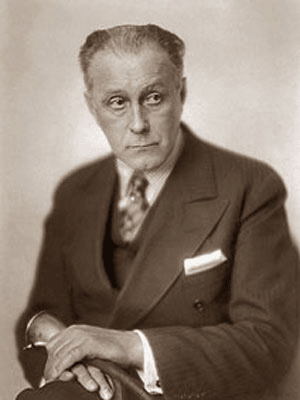Loos attended the construction and technical department of a vocational school in Bohemian Liberec.
1870 - 1933
Adolf Loos

description
Adolf Loos (1870-1933) was an Austrian architect, architectural theorist, one of the most influential European architects of the late 19th century, and is often known for his literary discourse that foreshadowed the foundations of the entire modernism. His architectural influence is mainly limited to major works in contemporary Austria and the Czech Republic. As a writer, he greatly influenced the development of 20th century architecture, writing a series of controversial essays that were influenced by his own architectural style, which condemned ornament and raised a range of social issues. Loos argued that since architecture satisfies the needs of life, it cannot belong to the sphere of art (the only exception is architectural monuments), that decorating buildings, which had a justification in the past, is now meaningless, that one cannot interfere with the development of a new style, since it is formed under the influence of new needs and new technical capabilities. The minimalist views of Adolphe Loos were reflected in the work of Le Corbusier, Mies van der Rohe and many other modernists and led to a fundamental change in the way architects perceived ornaments.
Main structures:
1) Steiner’s House (1910).
2) The village of Hoiberg, Vienna (1920).
3) Project of a villa on the Lido in Venice (1923).
4) T. Tzara’s mansion (1926).
5) J. Baker’s Mansion (1928).
6) Moller’s House (1928).
7) Müller House (1930).
Main features:
1) The idea that art and architecture belong to different spheres of human activity.
2) The purpose of architecture is to save the labor of builders.
3) Loos’ architecture is antipainful, based on simple geometric shapes.
4) Movement towards the utmost extreme rationalism. Extreme simplicity of buildings.
5) The concept of “spatial plan” is a complex system of organizing internal space, which found expression in houses with rooms at different levels. Houses should not have a single division into floors. The height of the room was determined by its functional purpose.
6) The joints of structural elements are invariably hidden by the cladding.
7) Ornament is a crime.
8) Interiors have a contradiction between comfortable artlessness and strict monumentality.
9) Wall decoration with polished wood or stone to the height of the panels or the level of the frieze. The upper part of the wall remained white or completed with an ornamental pattern or classic frieze on plaster.
10) The floors, usually made of stone or parquet, were always covered with oriental carpets.
11) The brick of the fireplace contrasted with the light effect that was created by display cases, mirrors, lamps and all kinds of metal products.
12) Active use of built-in furniture.
13) The idea that rich natural materials and craftsmanship make up for the lack of decor and surpass any decor in their splendor.
1887 - 1888
1890 - 1893
1896
1912
1920 - 1924
1923
1931
Attended the construction and technical department of a vocational school in Liberec.
Educated at the Higher Technical School of Dresden.
Educated at the Higher Technical School of Dresden. Soon he went to America.
Moved to Vienna, where he worked as an architect for a construction company
Moved to Vienna, where he worked as an architect for a construction company. He published his articles on architecture in Viennese newspapers and later published his own magazine.
Opened an architectural school
Opened an architectural school that existed until the outbreak of the First World War. The school reopened in 1920.
He was the chief architect
He was the chief architect for the Vienna construction department.
Participated in the Autumn Salon in France
Participated in the Autumn Salon in France, and later in various architectural congresses.
Was sent to a clinic
Was sent to a clinic and then to a sanatorium; lost his hearing. He died in 1933 while undergoing a course of treatment.
